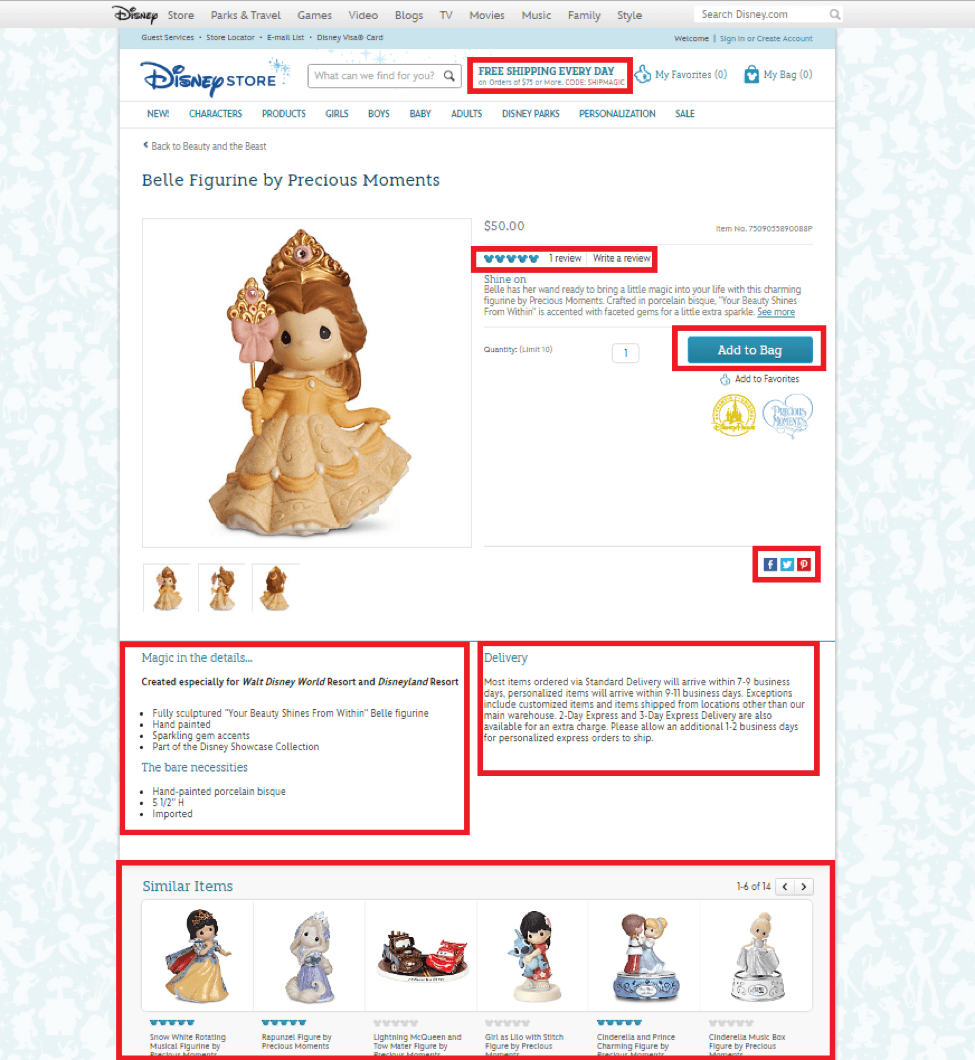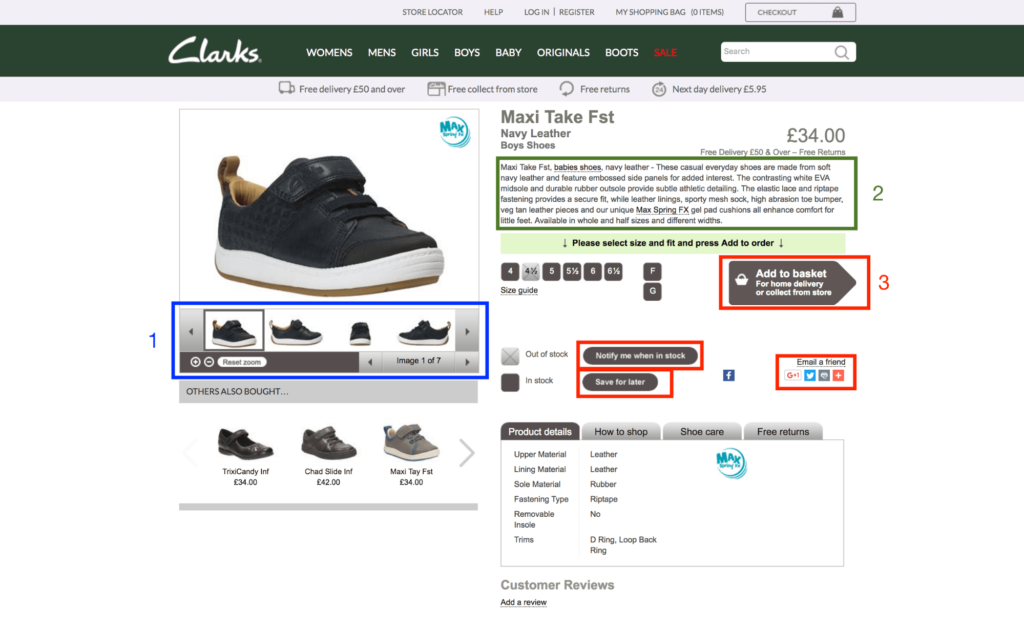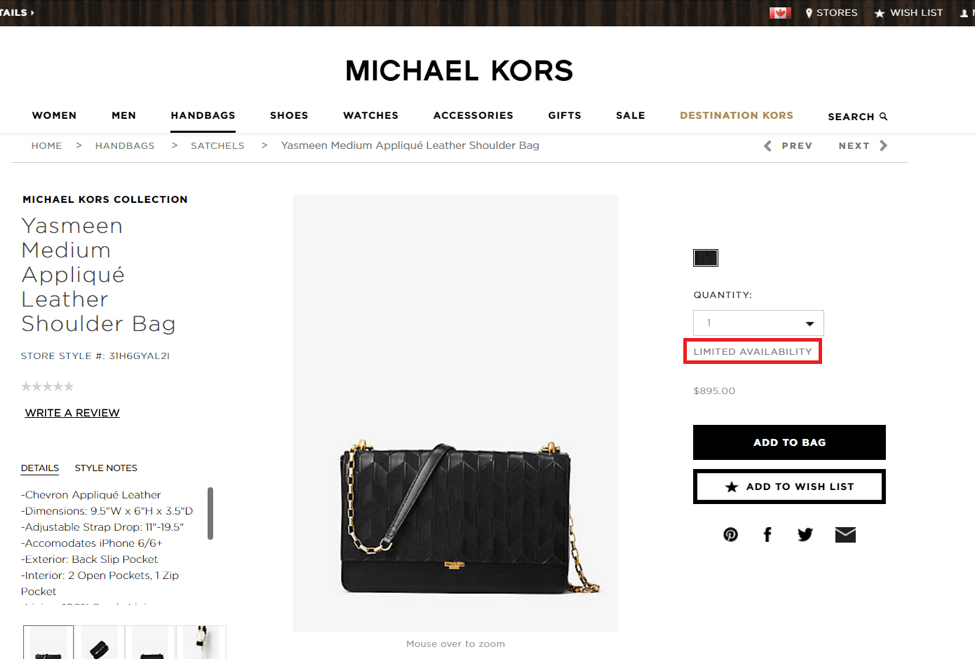How To Create Landing Page Content That Actually Converts Creating a well-optimized landing page for your company website, eCommerce store or blog can be tricky. Depending on your niche and the audience you built up, chances are that your landing page already has a stable design solution. Product descriptions are essentially your 24/7 sales staff. If your product descriptions are both informative and persuasive, your visitors will be encouraged to buy. If your product descriptions are bland and nondescript, sales will be lackluster at best. How to Write Effective Product Descriptions That Convert. We Make You Look Good. First impressions are all that matter when you're trying to sell your product online. And trying to figure out yourself how to create a profitable, good looking landing page that converts is tough — if not impossible.
- How To Make A Product Page That Converts Word
- How To Make A Product Page That Converts Two
- How To Make A Product Page That Converts Text
- How To Make A Product Page That Converts Pdf
You can drive all the traffic in the world to your product page, but if nobody converts, it's a waste of time and effort.
The average conversion rate for a product page is almost 8%, which means for every person who buys, more than eight don't. Your product page is your virtual sales showroom—don't let your potential customer leave without sealing the deal!
In this guide, I'll share a nine-step checklist of features that every high-converting product page should have.
9 Qualities of a High-Converting Product Page
You're here because you desperately need to sell more stuff.
The good news? It is possible to make it easier for people to buy from you—and to make them want to purchase your products.
We’ll cover the following elements of a high-converting product page:
Click the links above to jump to a specific section, or continue scrolling to learn how your newly-optimized product pages can double (if not triple) the conversions they’re currently generating.
1. Showcase your product with high quality photos.
Your product is worth showing off. That’s why you need to showcase it in the best possible light—starting with high-quality images.
Photos tell people exactly what they're buying, which makes them feel more comfortable about buying it. If you can provide shots from multiple angles, there are no surprises when it arrives on your customer’s doorstep.
And, if customers get exactly what they’re expecting, there’s going to be fewer returns.
Your photos should be high resolution so visitors can see the item in detail. However, it’s important to make sure that your files are compressed so they load quickly. You don’t want to drive people away with an annoyingly slow page.


You can check your page’s speed using Pingdom (or other similar online tools) for free! The faster your page’s load time, the higher your conversion rates will be. Walmart has found that for every one second of increased speed on their website’s page, conversions improved by 2%.
So, what photos should you upload to your product or service page?
You can combine studio shots with lifestyle images of the product being used (or modeled) so customers have a clearer idea of what to expect.
Videos are also worth using on product pages for valuable items, because they can increase product page conversion rates from anywhere between 84%-144%. This could be a video of someone using your product in-action, or a quick clip of you explaining how to use it.
Take Nike’s product pages, for example. They showcase their shoes in fantastic detail with high quality images from a range of angles. There’s also a cool video that autoplays, showing the product in action.
PC: Nike
The beauty is you don't need Nike's budget to create similar product pages. Most ecommerce platforms (Shopify, Squarespace, 3DCart, etc.) make it easy to upload product photos and videos.
You also don't need expensive equipment. Your smartphone's camera is high quality enough to showcase your products. Grab a simple lighting kit or tripod off Amazon, and you're good to go!
2. Write a killer product description.
Killer copy has the ability to turn your product page from a barren wilderness to a well-oiled conversion machine.
For example, research has found that descriptive menus at restaurants increased sales by 27%, and improved customer attitudes towards the food and restaurant.
What does that mean for you?
When creating your product or service page, don't underestimate the power of the product description. Use conversion copywriting techniques to encourage people to buy—especially if you're selling an expensive product or service.

A few conversion copywriting techniques include:
- Write like you talk
- Use short sentences
- Tell a story
- Be as specific as possible
Be sure to also restrict your use of over-complicated jargon and technical terminology (unless your audience understands it). Keep your copy simple, always focusing on how the product will help solve your target customer’s problem.
You can also use bullet points to present the information in a way that’s easy for your target customer to scan. These can highlight the product’s key features and unique selling points, such as:
- Measurements
- Materials
- Color
- Availability
- Style or fit
- Other cool features that set it apart from the competition
Amazon’s descriptions provide great detail about their products. They’re also easy to read thanks to the simple layout and scannable bullet points.
PC: Amazon
3. Show the value of your product with your pricing.
The key to the pricing element of a landing page is to make it clear that your product is worth your customer’s hard-earned cash. You can do that by:
- Showcasing previous pricing, along with any sale prices or markdowns
- If you're cheaper than competitors, including price comparisons
- Offering additional pricing information, such as monthly payments if customers can pay in installments
- Anchoring your price by displaying an original, higher cost that has been marked down for a special sale or discount
StationeryXpress’s product page utilizes price anchoring by placing their manufacturer’s suggested retail price next to the lower price the customer will actually pay. This method works because customers love having something to compare to when deciding an item’s value.
PC: StationeryXpress
Is your price competitive? It doesn’t always have to be cheaper than your peers to stand out. If you charge more than competitors, sell the reason why:
- Is the product more luxurious?
- Is it made with sustainable materials?
- Are you offering a more comprehensive service?
- A better guarantee?
Be confident in your pricing, and show customers what a great value they're getting.
4. Create urgency with clever availability messaging.
Scaring your customer is usually a no-no, but the fear of missing out is an exception. FOMO is a great way to get people to convert on your product page.
In fact, FOMO is a marketing scarcity tactic that helped one eCommerce website see a 9% increase in revenue.
So how can you harness the power of FOMO on your product pages? Simply add information that answers these key pre-purchase questions:
- How much stock do you have on that product?
- When is your next service availability?
- How much longer do customers have to buy at this price?
If you tell your customer that stock is in short supply or that they don’t have long to buy, they're likely going to fear missing out. This sense of urgency can help you turn a lead into a paying customer, then and there. This tactic also works great on pre-orders and registrations.
I use FOMO by adding a line to my service page that says:
“I’m currently booking projects starting in mid-August… But those spaces are filling up quickly. Get on my waitlist.”
Argos also has a handy “check stock” feature on their product pages, which allows potential customers to quickly find out if the item is available and ready to collect from their local store.
PC: Argos
And Forever 21 builds a sense of urgency with “low stock” messaging for certain sizes on their product pages.
PC: Forever 21
You might’ve also seen that some websites indicate a product’s popularity by showing how many people recently added it to their basket. Hotel booking sites, for example, will often use this to hurry the visitor into making the purchase before it’s “too late.”
5. Build confidence by using social proof.
People naturally want to take part in what other people are doing. The same idea applies to companies—customers are more likely to buy something if they see other people doing the same.
This group mentality is referred to as social proof, and you can utilize it by associating your brand with clients your customers already know or can identify with.
Highlight your high profile clients on your website, and add their logos to your product page to build confidence with your visitors.
You can also list awards you’ve won and trade associations you’re a member of, as well as including testimonials and reviews from happy customers. These elements all help to allay customers’ fears and demonstrate your credibility as a company.
Voices.com added these same social proofs to their website and increased their conversion rate by over 400%! RentoKil also increased conversion rates through their service page, which showcases their positive reviews.
PC: Rentokil
Customers are more likely to trust you when you have social proofs that establish you’re a reputable brand other people are already buying from.
6. Use trust signals to build assurance.
Did you know that half of all American Internet users are “deterred” from buying things online because they fear a lack of privacy and security?
Online privacy scandals impact the way your customers buy things online, but you can guide visitors arriving on your product pages to overcome that fear with trust signals.
Similar to social proof, trust signals help establish you as a credible brand.
Ease your customers' fears over making digital payments by including credit card logos and having valid, up-to-date HTTPS certificates on your site. This proves your customers’ connection is encrypted, and less at-risk of being hacked.
You can also build trust by highlighting the services available to the customer, including:
- Money-back guarantees
- Different payment options
- Delivery and returns policies (you can take this further and personalize by location, like “Free returns for Manchester customers”)
Take a look at this product page from Brickhouse Security. It includes delivery, exchange, and returns information to help reassure potential customers:
PC: Brickhouse Security
7. Simplify the decision-making process with option comparison.
Too many options can actually hurt your conversions. (A landmark study showed that people who had to choose from six flavors of jam were 10 times more likely to buy than those who had to choose from 24 flavors.)
But don't panic!
If you have a handful of similar services, you can help your visitors convert by guiding them towards purchasing an option most suitable for them with option comparisons or price anchoring.
This helps to remove the doubt in the customer’s mind by showing them the key benefits of each option before leading them to the most relevant item.
Michal Eisikowitz, for example, helps businesses looking for copywriters pick her services by offering three options with this fun (but helpful) comparison. The graphic summarizes her prices and services in a concise and eye-catching way.

How To Make A Product Page That Converts Word
PC: Michal Eisikowitz
Put this into practice for your own product page by showcasing your most popular upgrades for the item your customer is considering.
Chances are, they’ll want to take the option that gives them the most value for their money, which can boost your customer lifetime value too.
8. Increase revenue with cross-sells and upsells.
Cross-selling and upselling are similar to option comparison, but persuade your visitor to:
- Upgrade to purchase something better, or
- Add items to their cart that sync with what they’re already going to buy
It’s a tactic airlines use to make $28 billion annually (think upgrading your seats, add-on luggage, and extra legroom).
Cross-selling can help to significantly increase basket size and average order value (AOV). Simply highlight relevant products that your customer may want alongside the item they’re thinking of buying.
Casper’s “build your dream bed” section does a great job of cross-selling by displaying other products related to their mattress.
How To Make A Product Page That Converts Two
PC: Casper
Upselling can also increase revenue by significantly boosting average order value. Why? Because the premise is simple—show your customers products or services that are better than the item they’re already interested in.
For example, website visitors at Dreams are encouraged to buy the mattress as a set with a divan or ottoman bed, rather than on its own (leading to a potential extra £280 in revenue).
PC: Dreams
How To Make A Product Page That Converts Text
9. Drive purchases with a strong call to action.
A call to action (CTA) isn't just a nice-to-have—it's a product page essential that drives your visitor to do what you want them to.
Don't leave things to chance and assume the customer knows what to do next. Spell it out by telling them exactly what the action should be. In most cases, the step is “buy” or “sign-up.”
How To Make A Product Page That Converts Pdf
HVAC Recruitment has two strong calls to action on their service page, appealing to both groups of their target customers.
PC: HVAC Recruitment
It’s also critical to make sure that your CTA stands out visually. You might use a bold and attractive button color, large text, or an easy-to-read font.
Regardless of what it is, you’ll need to run A/B tests to determine what makes the best call to action for your website. Which colour, placement, or text works best? Tools like ConvertFlow or CrazyEgg can help you find out.
Don’t Stop Here

No matter how well your product or service page converts, you’ll always want it to do better. What’s important is to give the customer no other option but to hit that purchase button.
Valkyrie profile iso. If your product pages are missing any of the above features, it’s time to get cracking. Give these tips a try, and there’s no reason why your product pages won’t convert like crazy.
Related: 5 Text Request Features to Help You Convert Visitors into Customers

